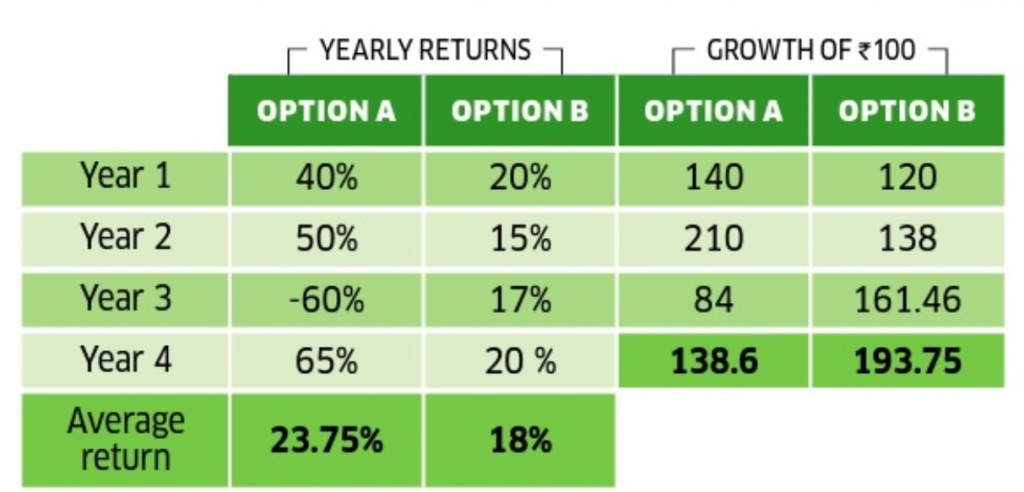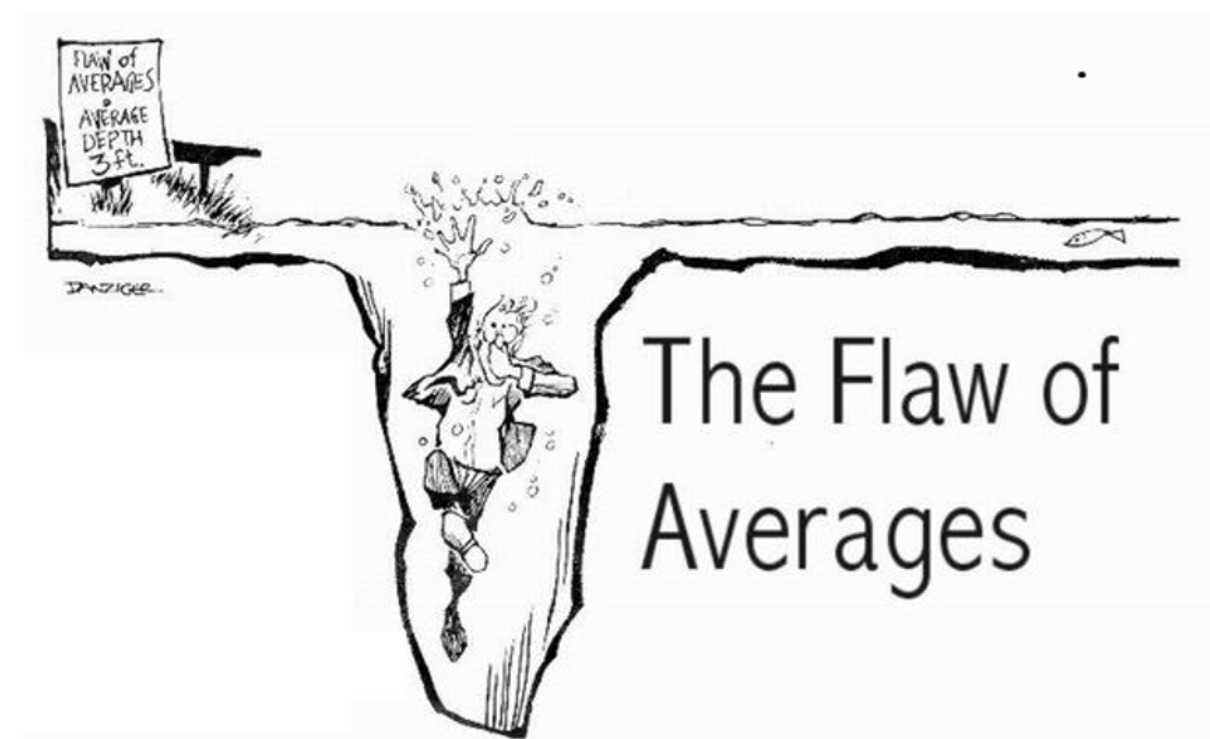Can a 6 feet tall man drown in a river that is on average 4 feet deep?
You are out for a trek with friends and come across a river. There is a warning sign – the river is on average 4 feet deep, enter only if you can swim.
You think to yourself: I can’t swim but I’m 6 feet tall, so it shouldn’t be a problem.
Will it be a problem?
The river can be shallow for long stretches: a mere 2 or 3 feet, but it can be 2 feet at one place and more than 12 feet at others. So at 6 feet tall, you can still drown in a river with an average depth of 4 feet.
Let’s look at another example: if you were given a choice of investing in Option A or Option B, what would you choose?

Option A: which gives an average return of 23.75% or Option B: which delivers an average of 18%?
Before you scroll down, choose an option.

Most of us would choose Option A.
However, an investment of Rs 100 in the first product would have become Rs 139 and in the second product would have almost doubled to Rs 194.
Hence, if someone uses the word “average,” think twice. I am not advocating that we give up on averages. Used cautiously, they help to analyze patterns and take decisions.
Mutual Funds Sahi Hai
Everywhere you go, you hear of long term investing through mutual funds: Mutual Funds Sahi hai. And now you have started investing with the expectation of 12 to 14% returns annually. However, it is guaranteed that you will not get returns of 12% every year.
Equity markets are uncertain, and often, the sharp moves come in short periods. For the rest of the time, markets will usually move sideways. As a result, the returns are not linear year after year. When you look at the Nifty returns for periods of 5 and 10 years over the past 30 years, you will see that returns have sometimes been very high and sometimes negligible.
It’s impossible to time the market; you have to be patient for market cycles to play out.
Financial Goals are the Key
An SIP over 7-10 years goes through several cycles of market ups and downs.
| Nifty 50 Index Returns | Actual | Expected |
| 2012 | 29% | 13.5% |
| 2013 | 7% | 13.5% |
| 2014 | 33% | 13.5% |
| 2015 | -3% | 13.5% |
| 2016 | 4% | 13.5% |
| 2017 | 30% | 13.5% |
| 2018 | 6% | 13.5% |
| Avg Returns Past 7 years | 13.5% | 13.5% |


